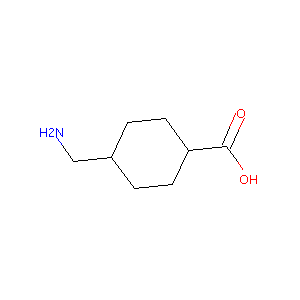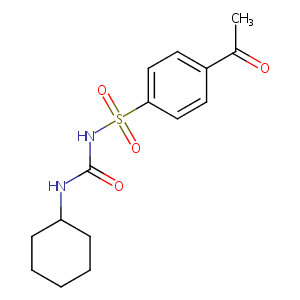| 1 |
Recurrent recessive mutation in deoxyguanosine kinase causes idiopathic noncirrhotic portal hypertension.Hepatology. 2016 Jun;63(6):1977-86. doi: 10.1002/hep.28499. Epub 2016 Mar 31.
|
| 2 |
URL: http://www.guidetopharmacology.org Nucleic Acids Res. 2015 Oct 12. pii: gkv1037. The IUPHAR/BPS Guide to PHARMACOLOGY in 2016: towards curated quantitative interactions between 1300 protein targets and 6000 ligands. (Ligand id: 6573).
|
| 3 |
Tranexamic acid FDA Label
|
| 4 |
Tranexamic Acid (TXA) and Corona Virus 2019 (COVID19) in Inpatients (TCInpatient)
|
| 5 |
URL: http://www.guidetopharmacology.org Nucleic Acids Res. 2015 Oct 12. pii: gkv1037. The IUPHAR/BPS Guide to PHARMACOLOGY in 2016: towards curated quantitative interactions between 1300 protein targets and 6000 ligands. (Ligand id: 6793).
|
| 6 |
Evaluation of aprotinin and tranexamic acid in different in vitro and in vivo models of fibrinolysis, coagulation and thrombus formation. J Thromb Haemost. 2007 Oct;5(10):2113-8.
|
| 7 |
Diabetes and insulin secretion: the ATP-sensitive K+ channel (K ATP) connection.Diabetes.2005 Nov;54(11):3065-72.
|
| 8 |
Clinically and pharmacologically relevant interactions of antidiabetic drugs. Ther Adv Endocrinol Metab. 2016 Apr;7(2):69-83.
|
| 9 |
Molecular and biochemical characterisation of human short-chain dehydrogenase/reductase member 3 (DHRS3). Chem Biol Interact. 2015 Jun 5;234:178-87.
|
| 10 |
Characterization of the binding of sulfonylurea drugs to HSA by high-performance affinity chromatography. J Chromatogr B Analyt Technol Biomed Life Sci. 2010 Jun 1;878(19):1590-8. doi: 10.1016/j.jchromb.2010.04.019.
|
| 11 |
ADReCS-Target: target profiles for aiding drug safety research and application. Nucleic Acids Res. 2018 Jan 4;46(D1):D911-D917. doi: 10.1093/nar/gkx899.
|
|
|
|
|
|
|


